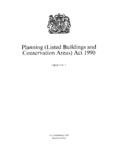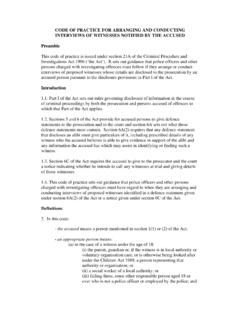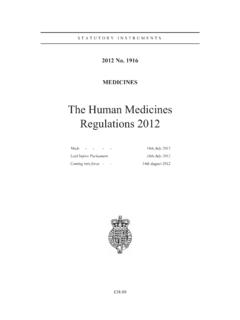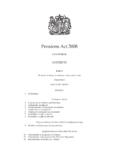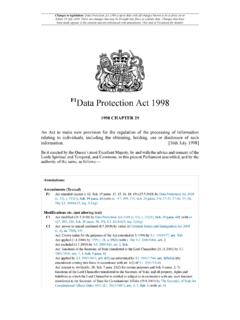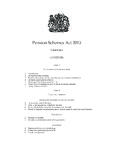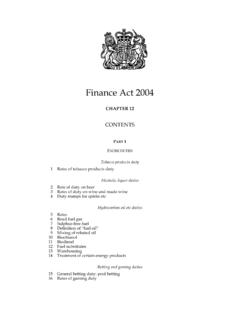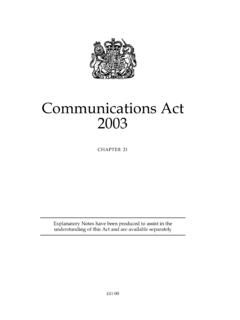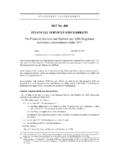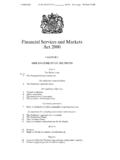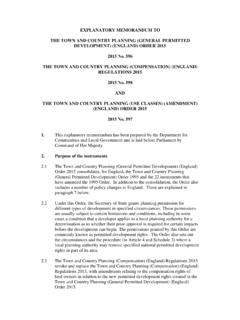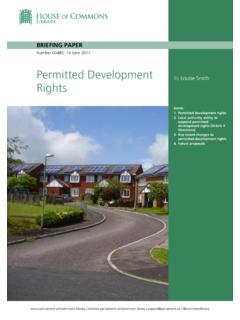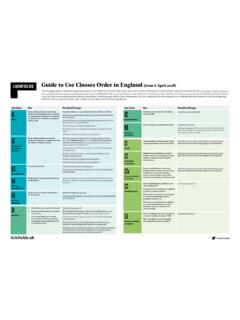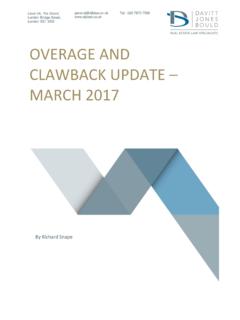Transcription of The Town and Country Planning (General Permitted ...
1 STATUTORY INSTRUMENTS 2008 No. 2362 TOWN AND Country Planning , england The Town and Country Planning ( general Permitted development ) (Amendment) (No. 2) ( england ) Order 2008 Made - - - - 4th September 2008 Laid before Parliament 10th September 2008 Coming into force - - 1st October 2008 The Secretary of State, in exercise of the powers conferred by sections 59, 60, 61 and 333(7) of the Town and Country Planning Act 1990(a), makes the following Order: Citation, commencement, interpretation and application 1. (1) This Order may be cited as the Town and Country Planning ( general Permitted development ) (Amendment) ( ) ( england ) Order 2008 and shall come into force on 1st October 2008. (2) In this Order the 1995 Order means the Town and Country Planning ( general Permitted development ) Order 1995(b).
2 (3) This Order applies in relation to england only. World Heritage Sites 2. (1) The 1995 Order is amended in accordance with this article. (2) In article 1(2) (citation, commencement and interpretation) (a) in the definition of the Use Classes Order for . substitute ; and ; and (b) after the definition of the Use Classes Order insert World Heritage Site means a property appearing on the World Heritage List kept under article 11(2) of the 1972 UNESCO Convention for the Protection of the World Cultural and Natural Heritage.. (3) In Part 2 (article 1(5) land) of Schedule 1 (a) at the end of paragraph (e) for . substitute ; and ; and (b) after paragraph (e) insert (f) a World Heritage Site.. (a) 1990 ; to which there are amendments not relevant to this Order.
3 These powers are now vested in the Welsh Ministers so far as they are exercisable in relation to Wales. They were previously transferred to the National Assembly for Wales by article 2 of, and Schedule 1 to, the National Assembly for Wales (Transfer of Functions) Order 1999, 1999/672: see the entry in Schedule 1 for the Town and Country Planning Act 1990 ( ) as substituted by article 4 of, and Schedule 3 to, the National Assembly for Wales (Transfer of Functions) Order 2000 ( 2000/253). By virtue of paragraphs 30 and 32 of Schedule 11 to the Government of Wales Act 2006 ( ), they were transferred to the Welsh Ministers. (b) 1995/418. Relevant amendments were made by 2005/2935 and 2008/675. 2(4) In paragraph of Part 40 (installation of domestic microgeneration equipment) of Schedule 2 (a) in the definition of stand alone solar for ; substitute.
4 ; and (b) omit the definition of World Heritage Site . development within the curtilage of a dwellinghouse 3. In Schedule 2 to the 1995 Order, for Part 1 ( development within the curtilage of a dwellinghouse) substitute the text set out in the Schedule to this Order. Installation of Domestic Microgeneration Equipment 4. In paragraph of Part 40 (installation of domestic microgeneration equipment) of Schedule 2 to the 1995 Order, omit or roof slope from sub-paragraphs (c)(i) and (c)(ii). Hazel Blears One of Her Majesty s Principal Secretaries of State 4th September 2008 Department for Communities and Local Government 3 SCHEDULE Article 3 PART 1 development WITHIN THE CURTILAGE OF A DWELLINGHOUSE Class A Permitted development A.
5 The enlargement, improvement or other alteration of a dwellinghouse. development not Permitted development is not Permitted by Class A if (a) as a result of the works, the total area of ground covered by buildings within the curtilage of the dwellinghouse (other than the original dwellinghouse) would exceed 50% of the total area of the curtilage (excluding the ground area of the original dwellinghouse); (b) the height of the part of the dwellinghouse enlarged, improved or altered would exceed the height of the highest part of the roof of the existing dwellinghouse; (c) the height of the eaves of the part of the dwellinghouse enlarged, improved or altered would exceed the height of the eaves of the existing dwellinghouse.
6 (d) the enlarged part of the dwellinghouse would extend beyond a wall which (i) fronts a highway, and (ii) forms either the principal elevation or a side elevation of the original dwellinghouse; (e) the enlarged part of the dwellinghouse would have a single storey and (i) extend beyond the rear wall of the original dwellinghouse by more than 4 metres in the case of a detached dwellinghouse, or 3 metres in the case of any other dwellinghouse, or (ii) exceed 4 metres in height; (f) the enlarged part of the dwellinghouse would have more than one storey and (i) extend beyond the rear wall of the original dwellinghouse by more than 3 metres, or (ii) be within 7 metres of any boundary of the curtilage of the dwellinghouse opposite the rear wall of the dwellinghouse; (g) the enlarged part of the dwellinghouse would be within 2 metres of the boundary of the curtilage of the dwellinghouse, and the height of the eaves of the enlarged part would exceed 3 metres.
7 (h) the enlarged part of the dwellinghouse would extend beyond a wall forming a side elevation of the original dwellinghouse, and would (i) exceed 4 metres in height, (ii) have more than one storey, or (ii) have a width greater than half the width of the original dwellinghouse; or (i) it would consist of or include 4 (i) the construction or provision of a veranda, balcony or raised platform, (ii) the installation, alteration or replacement of a microwave antenna, (iii) the installation, alteration or replacement of a chimney, flue or soil and vent pipe, or (iv) an alteration to any part of the roof of the dwellinghouse. In the case of a dwellinghouse on article 1(5) land, development is not Permitted by Class A if (a) it would consist of or include the cladding of any part of the exterior of the dwellinghouse with stone, artificial stone, pebble dash, render, timber, plastic or tiles; (b) the enlarged part of the dwellinghouse would extend beyond a wall forming a side elevation of the original dwellinghouse; or (c) the enlarged part of the dwellinghouse would have more than one storey and extend beyond the rear wall of the original dwellinghouse.
8 Conditions development is Permitted by Class A subject to the following conditions (a) the materials used in any exterior work (other than materials used in the construction of a conservatory) shall be of a similar appearance to those used in the construction of the exterior of the existing dwellinghouse; (b) any upper-floor window located in a wall or roof slope forming a side elevation of the dwellinghouse shall be (i) obscure-glazed, and (ii) non-opening unless the parts of the window which can be opened are more than metres above the floor of the room in which the window is installed; and (c) where the enlarged part of the dwellinghouse has more than one storey, the roof pitch of the enlarged part shall, so far as practicable, be the same as the roof pitch of the original dwellinghouse.
9 Class B Permitted development B. The enlargement of a dwellinghouse consisting of an addition or alteration to its roof. development not Permitted development is not Permitted by Class B if (a) any part of the dwellinghouse would, as a result of the works, exceed the height of the highest part of the existing roof; (b) any part of the dwellinghouse would, as a result of the works, extend beyond the plane of any existing roof slope which forms the principal elevation of the dwellinghouse and fronts a highway; (c) the cubic content of the resulting roof space would exceed the cubic content of the original roof space by more than (i) 40 cubic metres in the case of a terrace house, or (ii) 50 cubic metres in any other case; (d) it would consist of or include 5 (i) the construction or provision of a veranda, balcony or raised platform, or (ii) the installation, alteration or replacement of a chimney, flue or soil and vent pipe; or (e) the dwellinghouse is on article 1(5) land.
10 Conditions development is Permitted by Class B subject to the following conditions (a) the materials used in any exterior work shall be of a similar appearance to those used in the construction of the exterior of the existing dwellinghouse; (b) other than in the case of a hip-to-gable enlargement, the edge of the enlargement closest to the eaves of the original roof shall, so far as practicable, be not less than 20 centimetres from the eaves of the original roof; and (c) any window inserted on a wall or roof slope forming a side elevation of the dwellinghouse shall be (i) obscure-glazed, and (ii) non-opening unless the parts of the window which can be opened are more than metres above the floor of the room in which the window is installed.
